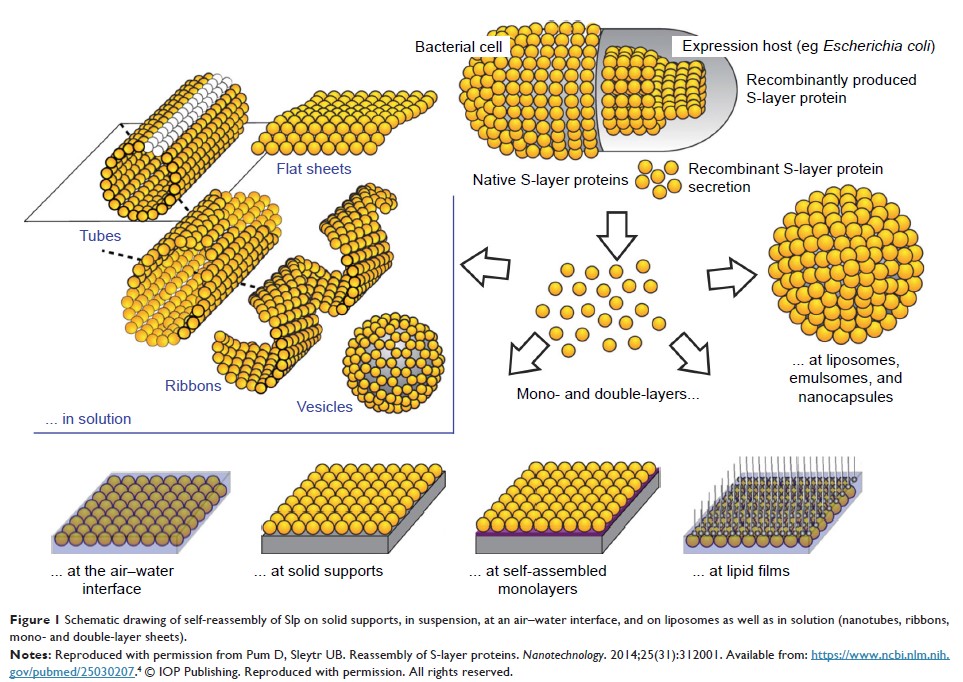108605
论文已发表
注册即可获取德孚的最新动态
IF 收录期刊
- 3.4 Breast Cancer (Dove Med Press)
- 3.2 Clin Epidemiol
- 2.6 Cancer Manag Res
- 2.9 Infect Drug Resist
- 3.7 Clin Interv Aging
- 5.1 Drug Des Dev Ther
- 3.1 Int J Chronic Obstr
- 6.6 Int J Nanomed
- 2.6 Int J Women's Health
- 2.9 Neuropsych Dis Treat
- 2.8 OncoTargets Ther
- 2.0 Patient Prefer Adher
- 2.2 Ther Clin Risk Manag
- 2.5 J Pain Res
- 3.0 Diabet Metab Synd Ob
- 3.2 Psychol Res Behav Ma
- 3.4 Nat Sci Sleep
- 1.8 Pharmgenomics Pers Med
- 2.0 Risk Manag Healthc Policy
- 4.1 J Inflamm Res
- 2.0 Int J Gen Med
- 3.4 J Hepatocell Carcinoma
- 3.0 J Asthma Allergy
- 2.2 Clin Cosmet Investig Dermatol
- 2.4 J Multidiscip Healthc

用于药物输送和生物医学应用的 S 层蛋白包覆脂质体:潜力和挑战
Authors Luo G, Yang Q, Yao B, Tian Y, Hou R, Shao A, Li M, Feng Z, Wang W
Received 6 October 2018
Accepted for publication 7 January 2019
Published 20 February 2019 Volume 2019:14 Pages 1359—1383
DOI https://doi.org/10.2147/IJN.S189935
Checked for plagiarism Yes
Review by Single-blind
Peer reviewers approved by Dr Cristina Weinberg
Peer reviewer comments 2
Editor who approved publication: Dr Linlin Sun
Abstract: Slp forms
a crystalline array of proteins on the outermost envelope of bacteria and
archaea with a molecular weight of 40–200 kDa. Slp can self-assemble on the
surface of liposomes in a proper environment via electrostatic interactions,
which could be employed to functionalize liposomes by forming Slp-coated
liposomes for various applications. Among the molecular characteristics, the
stability, adhesion, and immobilization of biomacromolecules are regarded as
the most meaningful. Compared to plain liposomes, Slp-coated liposomes show
excellent physicochemical and biological stabilities. Recently, Slp-coated
liposomes were shown to specifically adhere to the gastrointestinal tract,
which was attributed to the “ligand–receptor interaction” effect. Furthermore,
Slp as a “bridge” can immobilize functional biomacromolecules on the surface of
liposomes via protein fusion technology or intermolecular forces, endowing
liposomes with beneficial functions. In view of these favorable features,
Slp-coated liposomes are highly likely to be an ideal platform for drug
delivery and biomedical uses. This review aims to provide a general framework
for the structure and characteristics of Slp and the interactions between Slp
and liposomes, to highlight the unique properties and drug delivery as well as
the biomedical applications of the Slp-coated liposomes, and to discuss the
ongoing challenges and perspectives.
Keywords: S-layer
protein, liposomes, self-assembly, interactions, drug delivery, biomedical
applications
